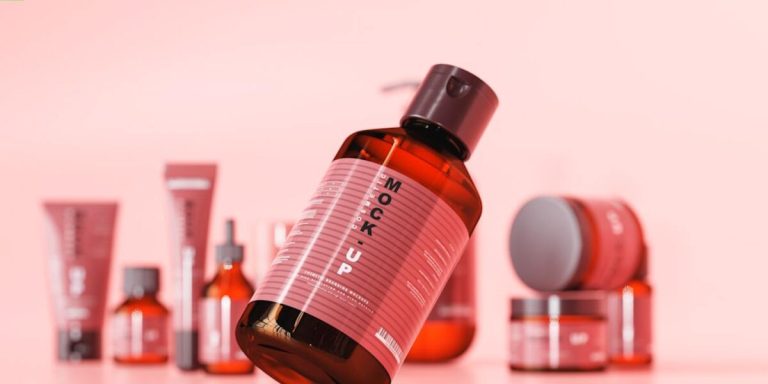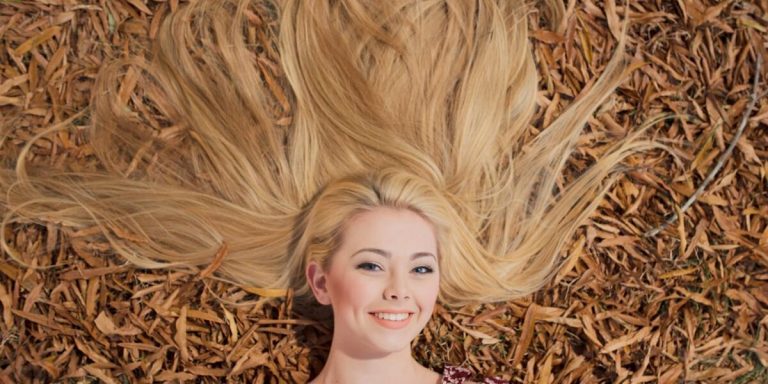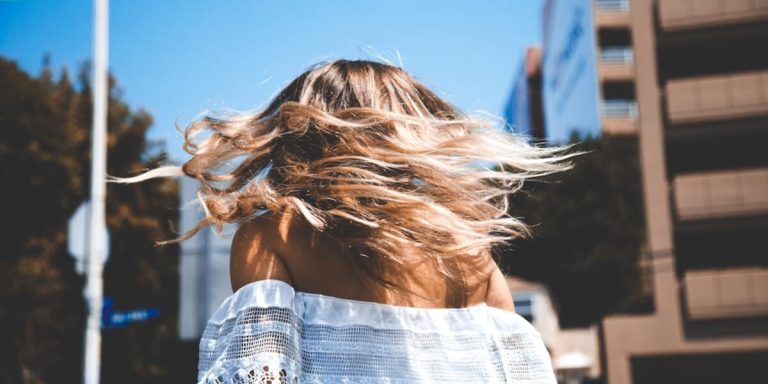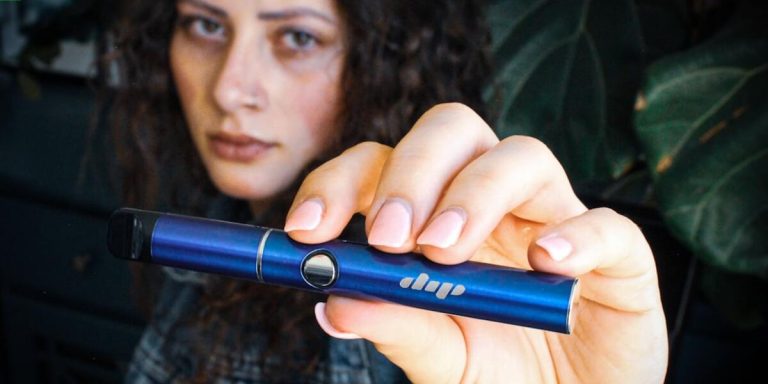Hair Care for Oily Scalp and Dry Hair: Understanding the Balancing Act
Manage an oily scalp and combat dry hair effectively with this guide. This common yet often misunderstood combination leads to mishandling, exacerbating the issue.
At Soulphany, we break down complex concepts into digestible nuggets of information. Our aim today is to do more than offer quick-fix solutions; we strive to explore the answers behind your hair type’s behavior and needs by:
- Explaining why it occurs
- Describing how different factors interact with each other to affect your hair’s health
- Providing steps towards achieving the all-important balance.
Did you know?
Contrary to popular belief, an oily scalp can actually lead to dry hair. This happens when too much sebum production from the scalp repels water, making it difficult for strands of hair to retain moisture.
Understanding Oily Scalp and Dry Hair: Causes and Challenges
Dealing with an oily scalp and dry hair can be perplexing in hair care. This combination often stems from imbalances in your body’s natural oil production or external factors, like climate or product use. Hormonal changes, diet, stress, or genetics may cause your scalp to overproduce oils, leading to a greasy appearance soon after washing. Conversely, the strands might stay dry and brittle due to moisture failing to reach them from the roots.
Addressing one aspect of this problem often worsens the other. Traditional advice suggests shampooing more frequently to reduce excess oils at the roots. However, this may strip away essential moisture and dry out your hair even more.
Conversely:
- Deep conditioning treatments restore lost hydration.
- They may weigh down hair.
- They can cause more grease on oily scalps.
Pollution and excessive heat styling, elements of the modern lifestyle, complicate hair care. We enter a challenging cycle as these issues demand routines tailored to individual needs instead of traditional broad-stroke solutions.
Identifying the Root Causes of an Oily Scalp
An oily scalp can often seem like a challenging condition to manage, especially when coupled with dry hair. However, understanding the root causes is key to formulating an effective solution for this unique combination.
Excessive washing or overuse of harsh products often cause an oily scalp and dry hair simultaneously. These actions strip your scalp of natural oils, prompting it to produce more oil as a protective response. Meanwhile, they can parch your strands, leaving them thirsty.
Hormonal imbalances might also play a role. Fluctuating hormones during adolescence, the menstrual cycle, or menopause can trigger an excess production of sebum on the scalp. Hormonal changes affect oil glands, causing them to overproduce sebum at the scalp while neglecting the lower lengths of hair. This results in:
- An oily scalp
- Brittle ends deprived of essential moisture
- Loss of nourishment and shine in hair ends
Under these conditions, dry hair often becomes unavoidable.
Your diet plays a significant role too – eating foods rich in fats increases grease production whereas insufficient water intake fails replenishing hydration needed by dehydrated tresses.
The Struggle With Dry Ends While Managing a Greasy Scalp
The struggle with managing dry ends while dealing with a greasy scalp is one that many individuals face daily. This can be particularly challenging because the two issues often require distinct care techniques.
Understand your unique hair type and learn how to care for it properly to tackle this problem head-on. First, recognize that an oily scalp with dry hair is neither uncommon nor “strange.” In fact, it’s quite commonplace!
Our body’s natural oil production system can cause an oily scalp with dry ends. Our scalps’ sebaceous glands produce excess oils when harsh washing routines or unhealthy diets stimulate them. At the same time, heat styling tools and chemical treatments can strip locks of moisture, leading to dry ends.
Fear not—specifically designed hair care regimens exist to address ‘oily scalp and dry hair’ concerns! To efficiently tackle each issue without exacerbating another, follow these effective ‘hair care for oily scalp and dry hair’ methods.
1) Avoid Over-washing: Washing too frequently tends strip away essential natural oils which protect follicles against damage—resulting therefore into overproduction eventually causing oiliness further up.
Daily Habits to Balance Oily Scalp and Moisturize Dry Hair
To care for an oily scalp and dry hair, balance excess oil management on your scalp with maintaining necessary oils for health. Additionally, moisturize your dry strands thoroughly without adding unwanted weight or grease.
- Adopting shampooing habits for an oily scalp and dry hair.
- Using products specifically designed for these conditions.
- Maintaining a regular washing schedule that is neither too often nor too infrequent.
Mild shampoos are optimal because they:
- Are gentle on the roots and ends.
- Effectively cleanse excessive sebum while preserving natural oils.
- Prevent over-drying or damage to fragile tresses.
Additionally, not only should you pay attention to the product you use but also to your application technique. When shampooing, focus on gently scrubbing the roots where unwanted grease accumulates. Apply conditioner generously from mid-lengths to tips while minimizing scalp contact to avoid clogs. This method restores moisture thoroughly, especially for parts prone to drying out like split-end-affected tips.
Through simple strategies integrated into everyday routine combined proper specialized-care goes long in ensuring dual issue battling less daunting task achieve balanced well-moisturized mane allowing regardless dilemma shine beautiful lively locks proudly confidently 2023 year ahead!
Shampooing Techniques for Oily-Scalped Individuals
Shampooing is a significant part of hair care for oily scalp and dry hair, as it influences the balance between oil production and moisture retention. Here are some techniques to consider.
Firstly, consider your shampooing frequency. If you have an oily scalp, you might feel compelled to shampoo daily. Yet, over-shampooing can strip your scalp of natural oils and trigger an increase in oil production.
Aim to wash your hair every other day or less frequently. Pay attention to your personal needs, which may vary depending on factors such as:
- How much you sweat after exercising
- The amount of time spent under the sun
The selection of the correct products plays a vital role. Some types can cause extra grease accumulation instead of helping you keep an oily scalp clean without stripping away needed hydration. However, you don’t need to go through a trial and error process when shopping for hair shampoos. Look for ingredients like salicylic acid, zinc PCA, and beta hydroxy acids that help control excess oil on labels when picking out a new bottle at the counter.
Always avoid heavy conditioning formulas and choose lighter versions ideal for your hair type and texture. Too much conditioner can weigh down strands, making them appear limper, especially if you have fine or thin hair.
Essential Hydration Practices for Brittle, Dry Ends
To strike a balance between an oily scalp and dry hair can be tricky, but just like any other dilemma in life – it is definitely manageable. Adapting some key daily habits geared towards optimal “hair care for oily scalp and dry hair” will create great improvement over time.
Starting with essential hydration practices for brittle, dry ends; water-rich foods play a significant role in maintaining hydrated locks. Fruits such as berries, melons, plums are not only packed with high water content but also necessary vitamins that promote healthy tresses from within.
Many individuals dealing with imbalanced skin find using hydrating masks once or twice a week beneficial. The Argan oil-based mask is a popular choice because of its intense moisturizing properties. This golden ingredient treats parched strands efficiently, considerably nourishing and softening your mane after each application.
Incorporate reducing direct heat exposure on the lower parts of your hair into your routine to prevent most damage, which often leads to split ends or breakages. Utilize air-drying techniques instead of a dryer after washing, apply protective sprays before straightening or curling, and consider avoiding heat styling entirely if possible.
When brushing, always start at the ends and gradually move upwards to untangle knots without stressing the roots. This prevents unnecessary grease build-up, particularly important for individuals with excessive sebaceous gland activity in their crown area. Stop before reaching the topmost part during comb-out sessions.
Product Selection Guide: Tailoring Your Regimen for Combination Hair Types
Navigating the terrain of hair care can be a minefield, especially when you are dealing with combination hair types such as oily scalp and dry ends. A specified product selection guide tailored for these specific needs is not just an advantage, it’s essential in maintaining healthy tresses.
Most people overlook the fact that each person’s hair has its unique characteristics; thus, choosing products requires a personalized approach to achieve desired results. If you’re dealing with an oily scalp and dry strands, focus on balancing oils and providing necessary hydration for the dry areas to significantly improve your hair health.
In 2023, significant advancements have improved our understanding of the scalp and its interactions with ingredients in shampoos, conditioners, and treatments. Modern science now enables us to tailor regimens to individual needs instead of relying on generalized advice from the past. Look for products containing natural oil control agents, such as tea tree oil or green tea extract, which cleanse without stripping essential moisture.
With this knowledge at hand combined with careful product selection according to one’s unique profile we’re confident anyone can overcome their seemingly contradictory ‘oily yet dry’ dilemma whilst enjoying beautiful voluminous locks!
Choosing Clarifiers That Won’t Over-Dry Your Tips
Choose clarifying shampoos and treatments carefully if you have combination hair types, particularly when dealing with an oily scalp and dry tips. Great hair days are still achievable! Let’s examine how to pick clarifiers that won’t increase dryness on the ends.
Check for hydrating ingredients in every shampoo or treatment product. Look for moisturizing elements such as:
- Argan oil
- Jojoba oil
- Honey extract
- Glycerin
These help maintain moisture levels along each strand without adding excess oils to your scalp, providing superior hair care for an oily scalp and dry hair by minimizing dehydration side effects.
- Do not excessively strip natural oils from your scalp and hair shafts
- Are labeled ‘pH balanced‘
- Are ‘sulfate-free‘
- Advertise a ‘gentle cleanse‘
Such products efficiently remove dirt buildup on greasy scalps without stripping necessary hydration from the strands’ lower parts.
Thirdly, incorporate regular deep-conditioning sessions within weekly routine schedules focusing more towards mid-lengths upto end sections rather than atop areas as they already produce surplus sebum which causes shine appearing all slick instead healthy glow .
Nurturing Treatments Specific to Split Ends Despite Oiliness
Understand your unique hair care needs to tackle the common yet challenging combination of an oily scalp and dry ends.
Craft a tailored regimen for “hair care for oily scalp and dry hair” to significantly alleviate this issue.
Finding a balance between controlling excess oil at your roots while preventing split ends might seem like walking on thin ice, but it’s indeed achievable. The key lies in meticulous product selection suited to address both conditions without causing harm to either section of your tresses.
The first step towards finding harmony requires thoughtful shampoo choices. Choose sulfate-free formulas designed specifically for treating an oily scalp as they get rid of extra greasiness without drying out the lower areas of your strands.
We focus on caring for our hydration-starved ends as we move down from the root zone. To lock in moisture at the drier sections and avoid an overly shiny top half, use conditioners enriched with nourishing oils like Argan or Avocado. Apply conditioner mostly to the tips, not throughout!
Deep conditioning treatments hold manifold benefits when maintaining combination hair types too- particularly those composed of protein-infusing elements such as keratin which help heal damage inflicted by environmental aggressors and excessive styling tools heat over time.
Conclusion
Managing an oily scalp with dry ends in the complex world of hair care might seem challenging. But remember, knowing how to balance these issues empowers you to nurture your unique hair type fully. Achieving healthy locks from root to tip is like tending a flourishing garden – it takes mindfulness and dedication.
Now that we’ve explored effective hair care tips for an oily scalp and dry hair, incorporate these strategies into your regular routine. Keep exploring our website for more resources on ‘Hair Care and Maintenance.’ Dive in—there’s always something new to learn about caring for your beautiful strands.







